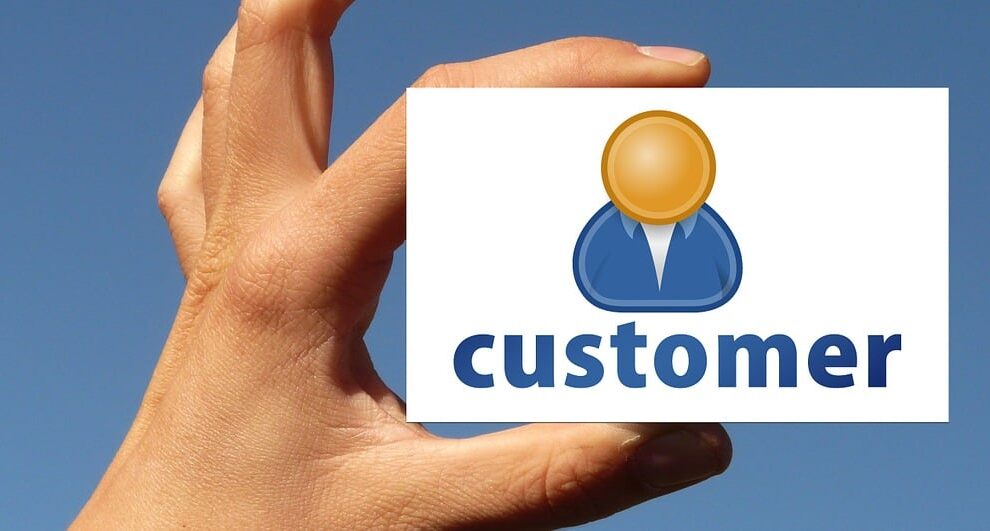Imagine you could taste every bag of chips in the supermarket before buying it, have a nice chat with every consultant, without having a contract in mind or base all your choices on the experiences of someone you truly trust. I guess that would be a pretty great way to help your decision-making process. Unfortunately, in most cases, all we have as a source of information is some kind of description, image, a website or – if we are lucky – some customer reviews.
All of this information, however, is situated beneath the brand’s design — and if that design fails to communicate the right things to us, the customers, then the greatness of the product or service is entirely irrelevant. I know we are not supposed to judge a book by its cover. However, the truth is: we do it anyway. How are we supposed to judge purely based on the brand’s quality and the product itself, when we don’t even get that far because the first contact point with us, the design, is unprofessional and simply not trustworthy or convincing?
Your brand’s visual appearance is your potential customer’s first point of reference. Only if they trust your brand, based on this first impression, could he or she become your actual customer. This trust comes in different shapes: trust in the quality of your product or service, trust in having a good business relationship with your company, and merely a good gut feeling in doing business with you. Building a good foundation for this trust is easier than you think. It is more about avoiding the simple things than doing complex ones. Perhaps the following 10 points sound obvious to you. If yes, just check out some of the designs of local businesses around you. They might not seem so obvious anymore. Above all, professional design is about keeping things simple.
1. Bad Readability: Never Put Design Before Readability
Even the best-designed visual is bad if it fails to convey your message or information. The main task of your design should, therefore, be to communicate clearly and understandably. This includes readability and visual harmony. Always be sure to have a high contrast between the background and your text, and avoid overlap.
My advice: Make it a priority to focus on your key message and its clear, uncluttered presentation.
2. No Visuals: Include Visuals to Increase Viewer Awareness and Design
Everyone has been confronted with PowerPoint slides loaded with text and boring graphs or tables. Try to implement graphics and visuals, but if there are no suitable photos or graphics for your use case, icons will always work to upgrade your text and help keep viewers engaged. This will also help your viewers to better organize different topics, chapters, or essential information.
My advice: Always include visuals to increase customer awareness and keep your audience engaged and focused.
3. Layout Overload: Don’t Fill Every Bit of Your Space
When you put too many design elements, fonts, graphics, or colors into your design, it is going to become overloaded quite quickly. The viewer will have a hard time figuring out which elements are essential, and your design will look very unprofessional. This feeling will then be transferred across your whole business as being unstructured and chaotic.
My advice: Always keep a clear visual structure and hierarchy in your design. This will help your audience to understand your key points, and it will allow them to react to your call to action.
4. Font Overload: Don’t Use Too Many Different Fonts
Too many different fonts and styles will confuse your audience and create a disturbance. For body copy, you should stick to clean and readable fonts – save the fancy ones for your titles. Stretching a font is also always a bad idea.
My advice: Never use more than two fonts in one document. Combine a fancy, exotic font for your title and a traditional, clean one for your informational text. This works really well most of the time and ensures a professional appearance while still adding a signature design element for your brand.
5. Color Overload: Don’t Use Too Many Different Colors
Just as is the case with fonts, it is a bad idea to mix too many colors in your design. This will appear to your audience as unprofessional and untrustworthy.
My advice: Try to find one color with different shades that will be your brand’s primary color and combine it with a second accent color. Try to use the complementary color of your main shade to create a visually-engaging color palette. But: Don’t overdo it with the accent color. As with all aspects of design, keeping it simple always works best for a professional appearance.
6. Inconsistency: Don’t Constantly Change Your Brand Identity
Brand owners are often tempted to continually change their visuals to increase variety. However, if you continually switch between corporate colors, fonts, or your visual style, your customers will never create associations with your brand. The same goes for using inconsistent styles across different platforms or design applications.
My advice: Use the same style and similar visuals throughout different formats. By being consistent in your whole brand design and marketing you will establish a strong and clear brand recognition.
7. Wrong Focus: Don’t Focus on the Wrong Elements
Always think about the key message that you want to convey to your viewers. If you highlight something with a different color or size, the viewer will think that it holds greater value than the rest of the content. Always be conscious about designing because everything in your design communicates something.
My advice: Define the hierarchy in which your audience should visually go through your design and highlight your content and information accordingly.
8. Wrong Formats: Don’t Use Pixelated Imagery or Jpeg Logos
This should be the most obvious design no-go: If you don’t have the image that you want to use in a format that is big enough and not pixelated, then don’t use it at all. The same goes for graphics: If you don’t have a png graphic with a transparent background for your graphic, icon, or logo, then don’t use it.
My advice: Always use vector formats for logos and high-resolution images for your designs. A pixelated photo or incorrect image format for your logo is ALWAYS worse than no photo at all. There is nothing more unprofessional than using the wrong formats and bad imagery.
9. Wrong Industry: Never Forget Your Initial Target Group
The core of a great brand is to first, define your target audience and second, apply its views and characteristics to your design. When you’re communicating, never forget the overall industry you are in or you’ll address the wrong target audience.
My advice: Use colors and fonts that are industry related and associated with the targeted industry.
You wouldn’t hire a lawyer who is using a playful and colorful font in his logo, nor buy toys for your kids from a black & white website using a classical font like Times New Roman.
10. Keep It Simple: Say No to Shadows, Textures & Effects
With all the different presets that software like Word or PowerPoint are offering, it is tempting to use them all in your design. However, having your logo or company slide overloaded with different effects, like shadows or outlines, will make it very hard for you to convey professionalism and trustworthiness to your audience.
My advice: There is nothing wrong with shadows, textures, or effects. However, most of the time, it is better to either choose one of them or else leave them out completely. A professional and well-designed font will always look better on its own without any additional effects.
Eager to check your brand’s design against those points now? You’re welcome to leave comments on your score or additional signs of an unprofessional brand appearance. You might think design rules are there to be broken. Sure, they can be, but for rules to break, you need to master them first. If you are not too sure about going to the next level with breaking the rules, try to stick to them first.





